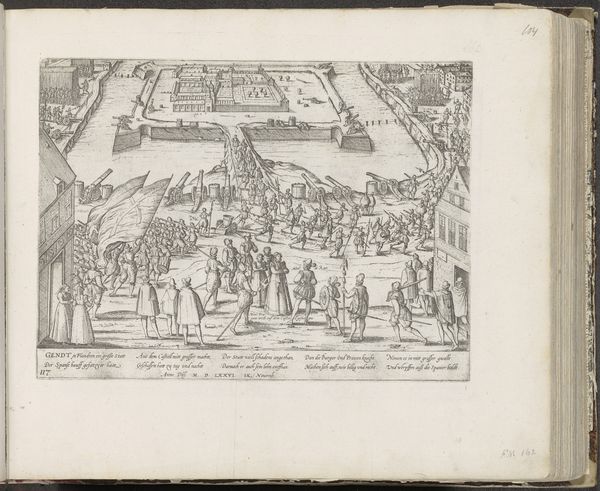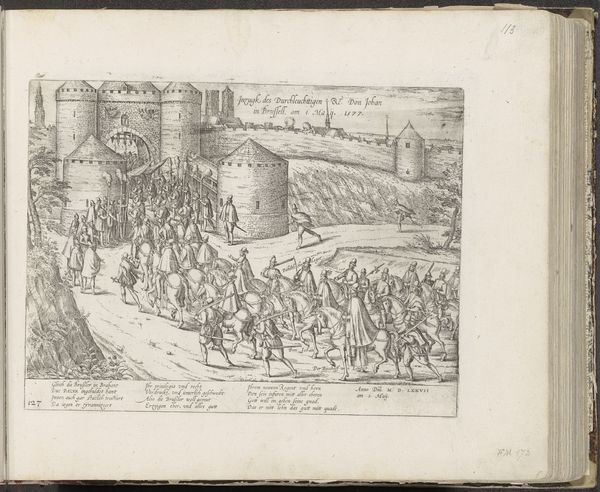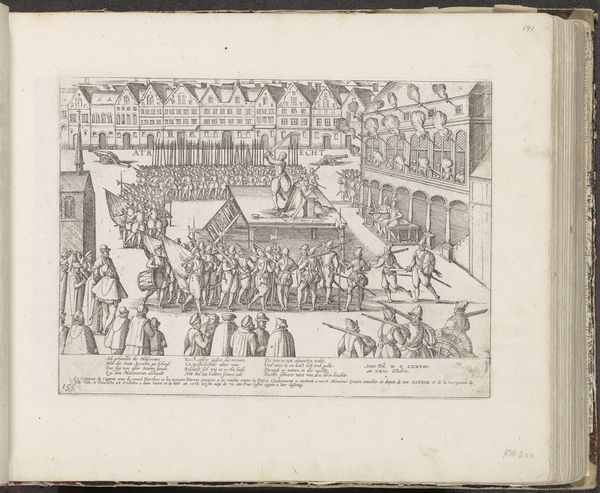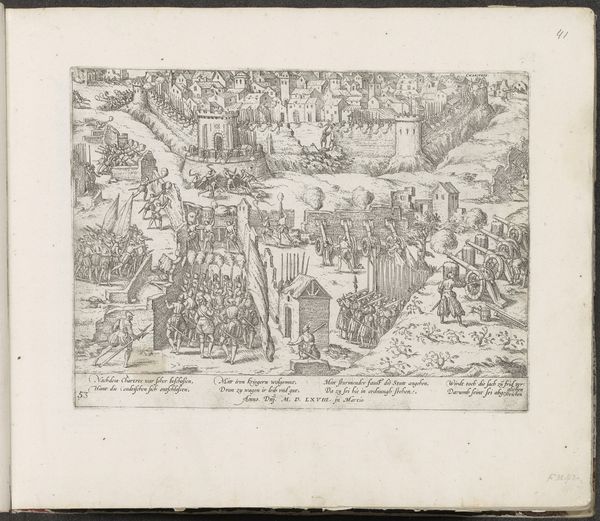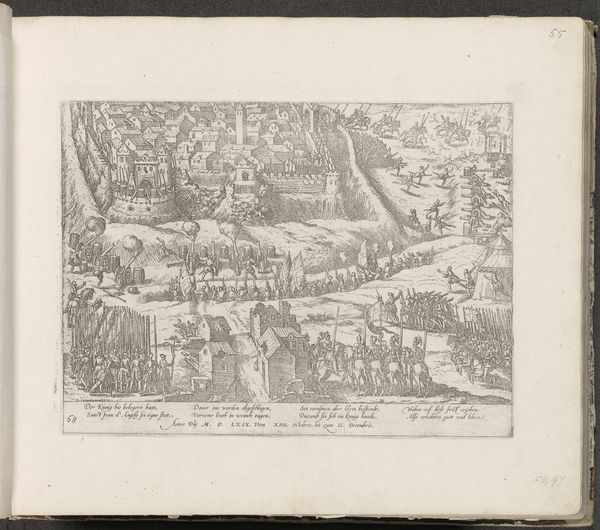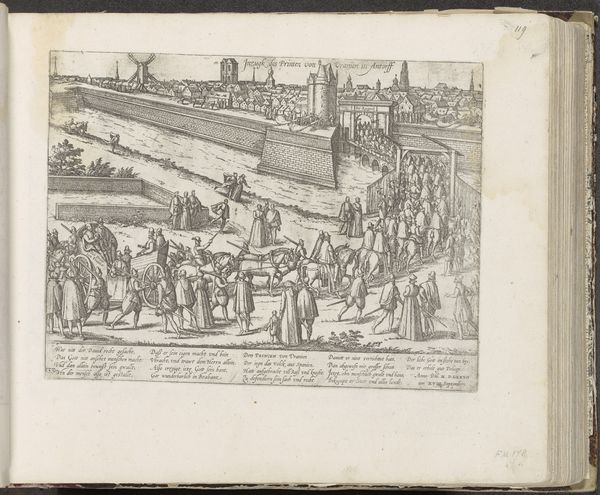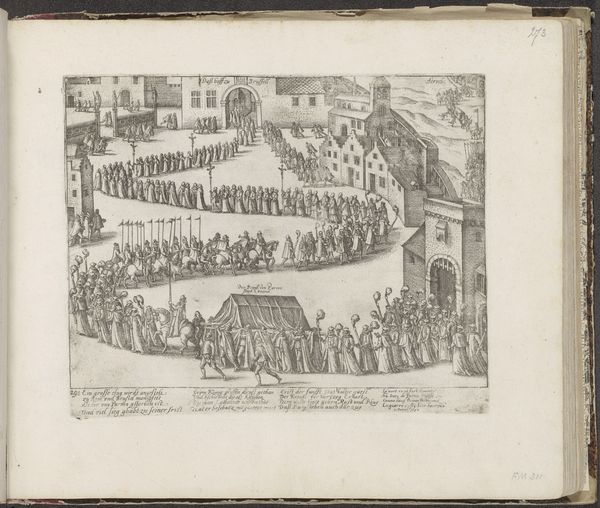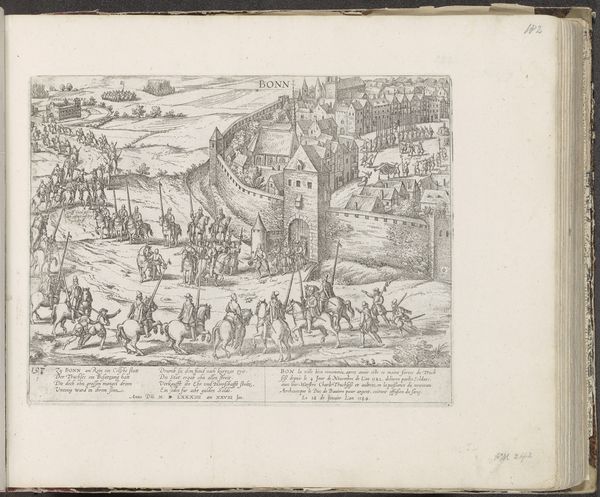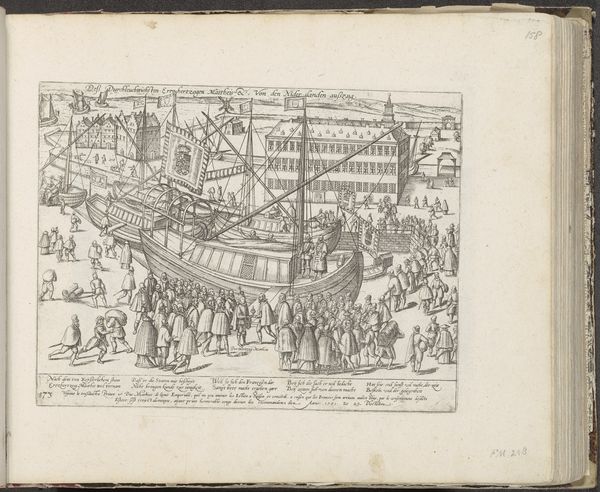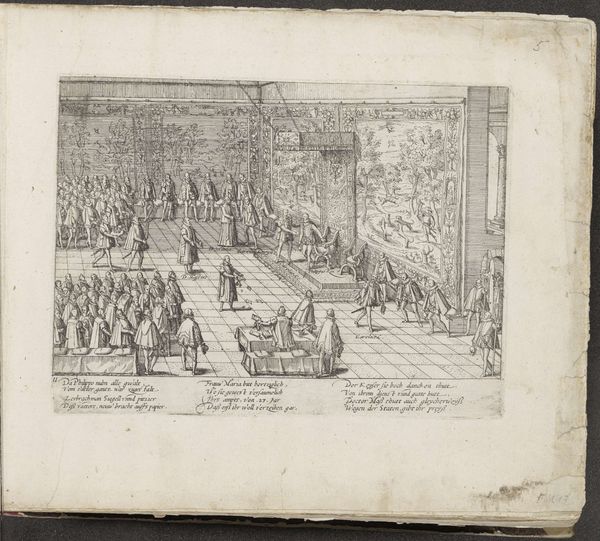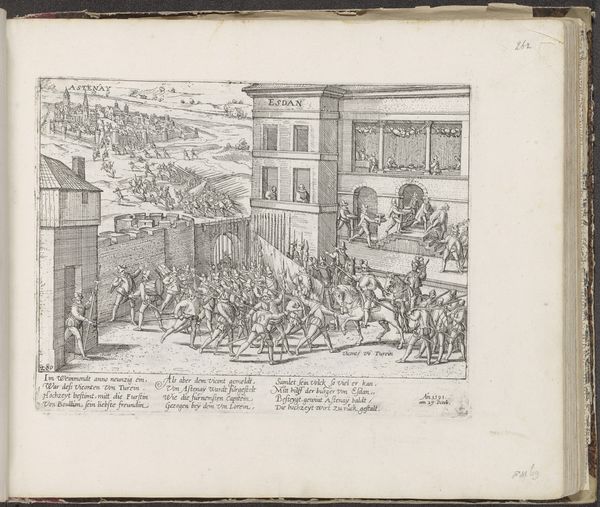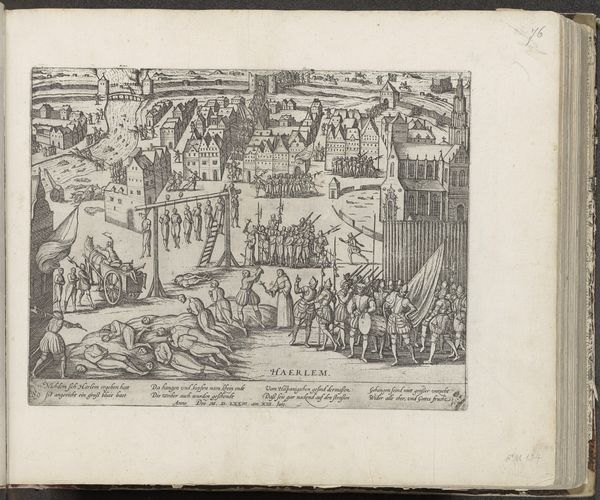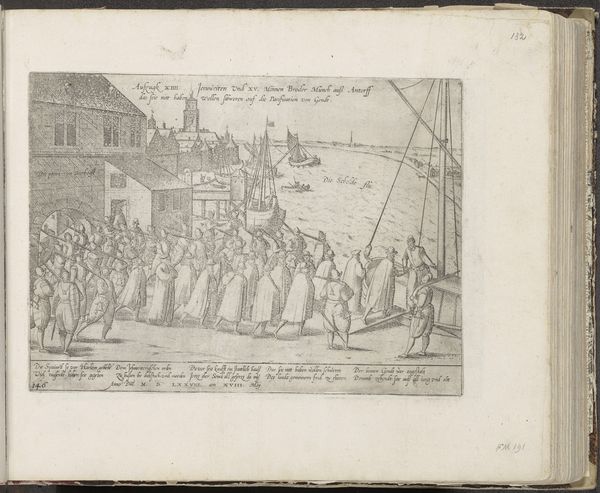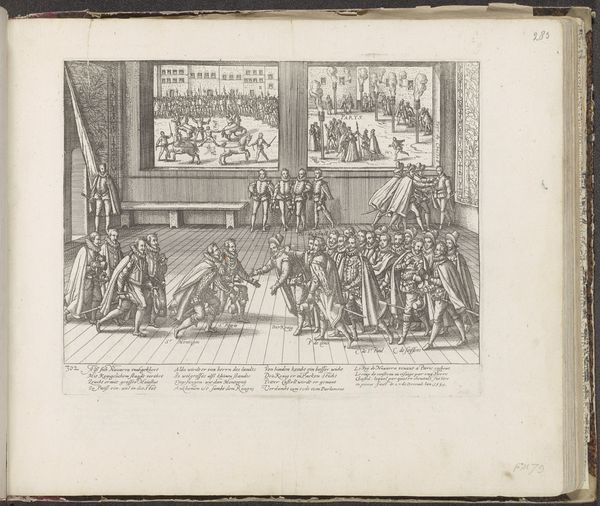
Carl Fugger en Fronsberger gevangen genomen voor Bergen op Zoom, 1577 c. 1581 - 1585
0:00
0:00
print, engraving
# print
#
landscape
#
mannerism
#
cityscape
#
history-painting
#
engraving
Dimensions: height 212 mm, width 284 mm
Copyright: Rijks Museum: Open Domain
Curator: This detailed engraving, likely dating from 1581 to 1585, by Frans Hogenberg, depicts the capture of Carl Fugger before Bergen op Zoom in 1577. It's held at the Rijksmuseum. Editor: It’s stark. Black and white, crowded with figures, and unsettling, actually. The way the artist renders perspective is interesting. Curator: Indeed. It is very much in the Mannerist style, exaggerating and distorting certain features. I am most intrigued by the composition and how it leads our eyes. Do you agree it almost acts as a form of political theater? Editor: Absolutely. Hogenberg masterfully orchestrates this scene of subjugation. Fugger, a symbol of power, is rendered powerless before a collective military force, which is especially loaded given Fugger's wealth accumulation at this historical moment of massive inequity. Curator: Observe how he cleverly positions cannons in the foreground, framing Fugger as an offering to Bergen op Zoom in the background. Also note how the weaponry used—a direct statement about early modern warfare. Editor: Exactly. And think about the symbols inherent in the cityscape itself. Walled cities, gates... these weren’t neutral architectural elements. They defined who was included and excluded, which remains sadly relevant. Curator: Agreed. What appears merely historical—the materials, the dress, the city—still carries coded and charged meanings for those who see themselves on the margins. And for those interested in heraldry or the symbology of military strength and conflict. Editor: What seems on the surface like a straightforward historical record becomes a complicated tapestry of power and meaning. It leaves us thinking about the enduring nature of these dynamics. Curator: Absolutely, and the work provides insight into 16th-century conflict and the rise of powerful banking families, even today, for us, after centuries have passed.
Comments
No comments
Be the first to comment and join the conversation on the ultimate creative platform.
